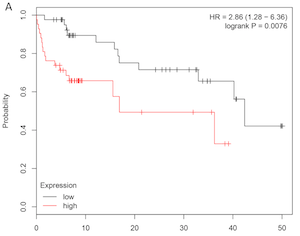Doctors are using a “divide and conquer†strategy against lung cancer, and in some corners of the battlefield, it’s working. A few mutations – genetic alterations in the tumor that don’t come from the patient’s normal cells — have been found for which drugs are effective in pushing back against the cancer.
However, most lung tumors do not have one of these mutations, and response rates to conventional chemotherapy in patients with advanced lung cancer are poor. Generally, only around 20 percent of patients show a clinical response, in that the cancer retreats noticeably for some time.
Johann Brandes and colleagues at Winship Cancer Institute have been looking for biomarkers that can predict whether an advanced lung tumor is going to respond to one of the most common chemotherapy drug combinations, carboplatin and taxol.
“The availability of a predictive test is desirable since it would allow patients who are unlikely to benefit from this treatment combination to be spared from side effects and to be selected for other, possibly more effective treatments,†Brandes says.
Brandes’ team’s data comes from looking at patients with advanced lung cancer at the Atlanta VAMC from 1999 to 2010. In a 2013 paper in Clinical Cancer Research, the team looked at a protein called CHFR. It controls whether cells can reign in their cycles of cell division while being bombarded with chemotherapy.
In this group being treated with carboplatin and taxol, patients who had tumors that measured low in this protein lived almost four months longer, on average, than those who had tumors that were high (9.9 vs 6.2 months).
His team takes a similar approach in a new paper published in PLOS One. Postdoc Seth Brodie is the first author of the PLOS One paper; he is also co-first author of the CHFR paper along with Rathi Pillai.
In the new paper, they are looking at genes that are methylated. Methylation is a chemical modification of a gene that usually turns it off. A prominent example of a methylation marker already in use in oncology is MGMT, which can predict response to temozolomide in patients with glioblastoma.
Brodie, Brandes and colleagues sorted through more than 1,500 methylation markers to find which one would be the best. What stuck out was methylation in the gene caveolin-1. Caveolins are proteins that are the main structural components of caveolae, specialized indentations in the cell membrane that function sort of like loading docks. They are involved in signaling, shipping cholesterol around and also in sensing mechanical stresses.
In this case, a lack of caveolin-1 leads to cancer cells have more difficulty pumping taxol-type drugs out, so they tend to be more vulnerable to those drugs. It’s not simply an issue of more aggressive cells having more caveolin, since caveolin loss otherwise helps cancer cells grow more, the authors found.
Although an advantage of methylation is that it’s more straightforward to measure in a standardized way, as opposed to levels of protein, and thus more likely to be taken up in the clinic, Brandes says the statistics for the caveolin marker will need validation in larger patient groups.


